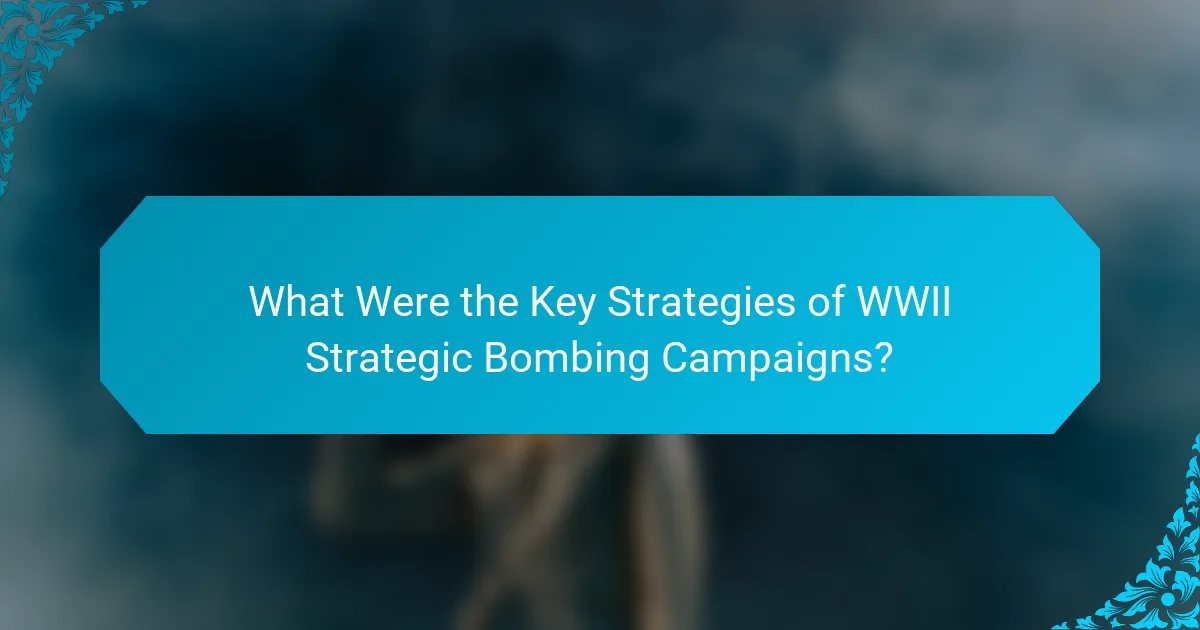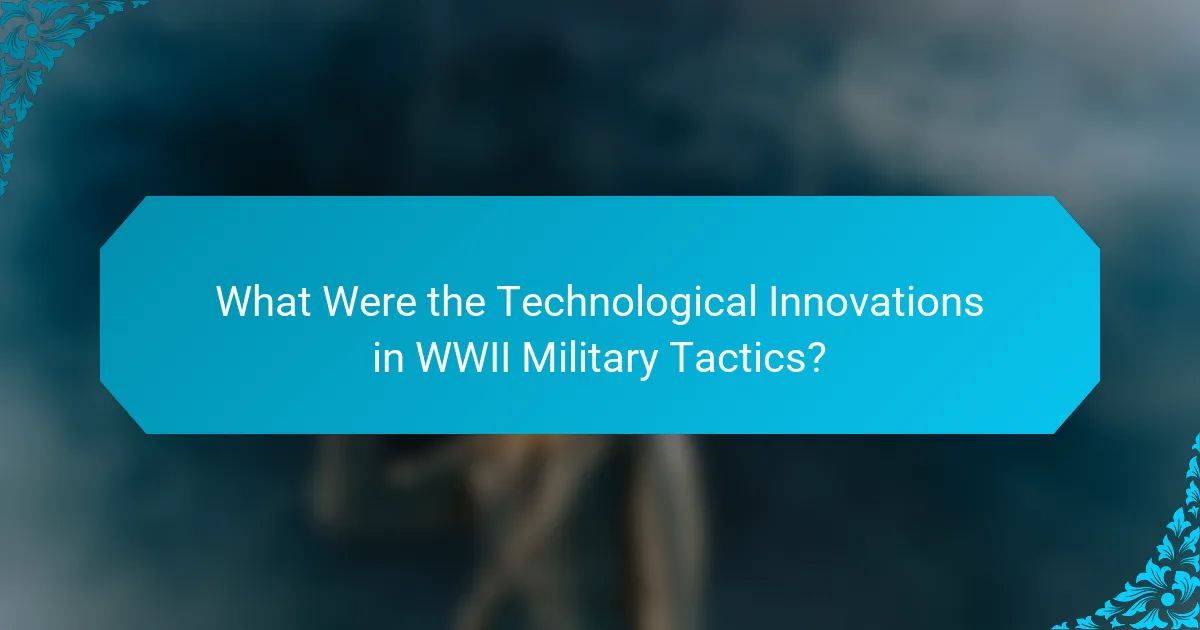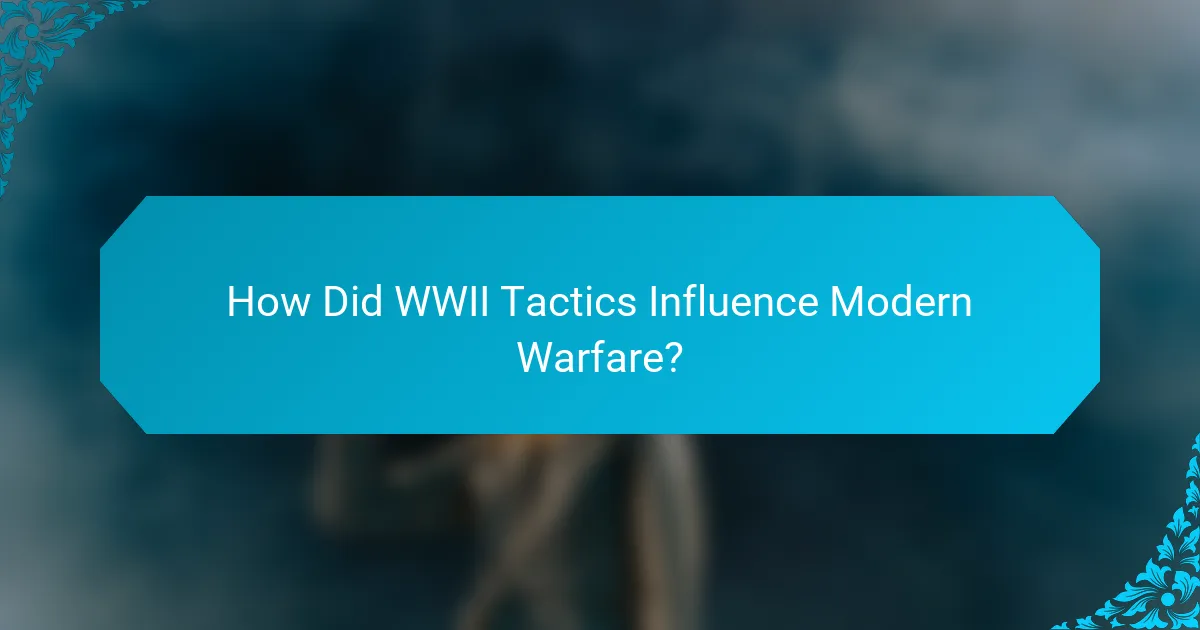During World War II, strategic bombing campaigns were designed to cripple an enemy’s war-making capabilities through focused aerial assaults on military and industrial targets. These operations not only aimed to inflict physical damage but also sought to undermine enemy morale and disrupt supply lines, ultimately influencing the war’s trajectory. Evaluating the effectiveness of these campaigns involved analyzing metrics such as casualty rates, infrastructure destruction, and the attainment of strategic goals.

What Were the Key Strategies of WWII Strategic Bombing Campaigns?
WWII strategic bombing campaigns primarily aimed to destroy an enemy’s war-making capabilities through targeted aerial attacks. These strategies involved extensive planning and coordination to maximize damage to military and industrial targets while minimizing risks to friendly forces.
Allied bombing of Germany
The Allied bombing of Germany focused on crippling the Nazi war machine by targeting factories, transportation hubs, and infrastructure. Notable campaigns included the bombing of cities like Hamburg and Dresden, which aimed to disrupt production and demoralize the German population.
Allied forces employed both precision bombing and area bombing tactics, with the latter resulting in significant civilian casualties. The bombing raids were often conducted at night to evade enemy defenses, but this also led to less accurate strikes.
Axis bombing of Britain
The Axis bombing of Britain, particularly during the Blitz, aimed to weaken British morale and disrupt industrial output. German Luftwaffe bombers targeted major cities, including London, with the intent of forcing Britain to surrender.
Despite extensive damage and loss of life, British resilience and effective air defense systems, such as radar, mitigated the impact of these bombings. The failure to achieve air superiority ultimately hindered Germany’s military objectives in Britain.
Technological advancements in aerial warfare
WWII saw significant technological advancements in aerial warfare, including the development of more powerful bombers like the B-17 Flying Fortress and the Lancaster. These aircraft featured improved bomb loads, range, and defensive armaments, enhancing their effectiveness in strategic bombing campaigns.
Additionally, innovations such as radar and the Norden bombsight improved targeting accuracy, although challenges remained in hitting specific military targets amidst heavy defenses. The evolution of jet engines towards the war’s end also hinted at the future of aerial combat.
Impact on civilian populations
The strategic bombing campaigns during WWII had profound impacts on civilian populations, leading to widespread destruction and loss of life. Cities targeted by bombings experienced significant infrastructure damage, displacing millions and creating humanitarian crises.
Moreover, the psychological effects of sustained bombing campaigns contributed to a climate of fear and uncertainty among civilians. The ethical implications of targeting cities for military advantage sparked debates that continue to resonate in discussions of modern warfare.
Objectives of strategic bombing
The primary objectives of strategic bombing included crippling enemy industrial capabilities, disrupting supply lines, and undermining civilian morale. By targeting key infrastructure, the Allies and Axis aimed to hasten the end of the war through economic attrition.
Strategic bombing was also intended to demonstrate military might and deter future aggression. However, the effectiveness of these campaigns varied, with some achieving their goals while others resulted in unintended consequences, such as increased resolve among the enemy population.

How Did Strategic Bombing Affect Military Outcomes?
Strategic bombing significantly influenced military outcomes by targeting an enemy’s industrial capabilities, morale, and troop movements. These campaigns aimed to weaken the opponent’s ability to sustain war efforts, disrupt supply lines, and instill fear, ultimately shaping the course of conflicts.
Destruction of industrial capacity
Strategic bombing campaigns aimed to cripple the industrial capacity of enemy nations by destroying factories, supply depots, and transportation networks. For instance, the Allied bombing of German industrial centers in cities like Dresden and Hamburg sought to disrupt the production of war materials.
By targeting key infrastructure, bombers could reduce the enemy’s ability to produce weapons and supplies, leading to a significant decline in military effectiveness. The destruction of industrial capacity often resulted in long-term economic repercussions, hindering recovery even after the war concluded.
Psychological impact on enemy morale
The psychological impact of strategic bombing on enemy morale was profound, as relentless air raids aimed to instill fear and despair among civilian populations and military personnel alike. High-profile bombings, such as those on London during the Blitz, sought to break the spirit of the populace and force governments to reconsider their military strategies.
While some bombing campaigns succeeded in demoralizing the enemy, others had the opposite effect, galvanizing resistance and determination. The effectiveness of psychological warfare through bombing depended on the resilience of the targeted population and their perception of the bombings.
Influence on troop movements
Strategic bombing affected troop movements by disrupting supply lines and forcing military leaders to alter their plans. Bombing key transportation routes, such as railroads and bridges, delayed troop deployments and resupply efforts, impacting operational effectiveness.
For example, the bombing of rail networks in France during World War II hindered German troop movements, contributing to the success of Allied ground offensives. However, the effectiveness of these disruptions varied, as some units adapted quickly to changing conditions.
Comparison of bombing effectiveness
Comparing the effectiveness of different strategic bombing campaigns reveals varying outcomes based on targets, execution, and technological advancements. For instance, the precision bombing of specific military targets often yielded better results than widespread area bombing, which could lead to high civilian casualties and backlash.
Key metrics for evaluating bombing effectiveness include the extent of industrial damage, changes in enemy troop morale, and the impact on military logistics. Campaigns that combined accurate targeting with psychological tactics generally achieved more favorable outcomes, demonstrating the importance of strategy over sheer volume of bombs dropped.

What Metrics Were Used to Evaluate Bombing Campaigns?
Metrics for evaluating bombing campaigns primarily included casualty rates, infrastructure damage, cost-effectiveness, and the achievement of strategic objectives. These metrics helped military planners assess the overall impact and success of their operations during World War II.
Casualty rates
Casualty rates were a critical metric in assessing the effectiveness of bombing campaigns. This included both military and civilian casualties, which could significantly influence public opinion and morale. For instance, high civilian casualties often led to increased scrutiny and opposition to the campaigns.
Evaluating casualty rates involved comparing the number of casualties to the population size of targeted areas. This provided insights into the human cost of operations and helped determine the ethical implications of such strategies.
Infrastructure damage assessment
Infrastructure damage assessment focused on the extent of destruction to key facilities such as factories, transportation networks, and communication systems. This metric was essential for understanding the long-term impact of bombing campaigns on a nation’s war capability.
Assessments often used aerial reconnaissance and post-attack surveys to quantify damage. For example, the destruction of railroads could severely disrupt supply lines, affecting military operations and civilian life alike.
Cost-effectiveness of campaigns
Cost-effectiveness evaluated the financial implications of bombing campaigns relative to their outcomes. This included analyzing the costs of aircraft, munitions, and operational expenses against the strategic gains achieved.
Military planners often sought to maximize damage while minimizing expenditure. A campaign that resulted in significant enemy losses at a low cost was deemed more effective than one that incurred high expenses with limited results.
Strategic objectives achieved
Strategic objectives achieved measured how well bombing campaigns met their intended goals, such as crippling enemy production or disrupting troop movements. Success in this area often depended on the alignment of bombing efforts with broader military strategies.
Evaluating this metric involved assessing whether the bombing campaigns contributed to overall military victories or merely inflicted damage without strategic advantage. For example, successful campaigns that led to the surrender of key cities were viewed as more impactful than those that did not significantly alter the course of the war.

What Were the Technological Innovations in WWII Military Tactics?
World War II saw significant technological innovations that transformed military tactics, particularly in air warfare. Key advancements included the development of long-range bombers, radar technology, and precision-guided munitions, each playing a crucial role in shaping the conflict’s outcomes.
Development of long-range bombers
The development of long-range bombers, such as the B-29 Superfortress, allowed for strategic bombing campaigns deep into enemy territory. These aircraft could carry larger payloads over greater distances, enabling attacks on industrial centers and military installations far from the front lines.
Long-range bombers typically had a range exceeding 2,000 miles and were equipped with advanced navigation systems. This capability changed the nature of warfare, as it allowed for sustained bombing campaigns that targeted enemy resources and morale.
Advancements in radar technology
Radar technology advanced significantly during WWII, providing militaries with the ability to detect enemy aircraft and ships at considerable distances. This innovation improved air defense systems, allowing for timely responses to incoming threats.
By the war’s end, radar systems could track multiple targets simultaneously and were crucial in battles such as the Battle of Britain. The integration of radar into military tactics enhanced situational awareness and contributed to more effective defensive strategies.
Use of precision-guided munitions
Precision-guided munitions (PGMs) emerged as a game-changer in WWII, allowing for more accurate strikes on specific targets. These weapons, often referred to as “smart bombs,” utilized guidance systems to improve hit accuracy, reducing collateral damage.
While PGMs were not as widespread during the war, their development laid the groundwork for future military operations. The ability to strike with precision meant that key infrastructure could be targeted with minimal impact on surrounding areas, a tactic that would be refined in later conflicts.

How Did WWII Tactics Influence Modern Warfare?
World War II tactics significantly shaped modern military strategies by emphasizing the importance of air power, combined arms operations, and technological integration. These tactics laid the groundwork for contemporary military doctrines that prioritize efficiency, precision, and adaptability in various combat scenarios.
Lessons learned from strategic bombing
The strategic bombing campaigns of WWII demonstrated the potential of air power to disrupt enemy infrastructure and morale. For instance, the Allied bombing of German industrial centers aimed to cripple production capabilities, showcasing how targeting key assets can yield significant strategic advantages.
Modern military forces have adopted these lessons by developing precision-guided munitions and conducting targeted strikes to minimize collateral damage while maximizing operational impact. This approach emphasizes the importance of intelligence and reconnaissance in identifying critical targets.
Evolution of military doctrine
WWII prompted a shift in military doctrine from traditional ground-centric strategies to more integrated approaches that combine air, land, and naval forces. The concept of joint operations emerged, emphasizing coordination among different branches of the military to achieve common objectives.
Today, military doctrines continue to evolve, incorporating lessons from past conflicts to address contemporary challenges. This includes adapting to asymmetric warfare, where non-state actors may employ unconventional tactics against traditional military forces.
Integration of technology in warfare
The technological advancements during WWII, such as radar, jet propulsion, and advanced communication systems, revolutionized military operations. These innovations not only enhanced combat effectiveness but also set the stage for the technological arms race that characterizes modern warfare.
Current military strategies increasingly rely on cutting-edge technologies, including drones, cyber capabilities, and artificial intelligence. This integration allows for more efficient operations and better situational awareness, enabling forces to respond swiftly to emerging threats.



